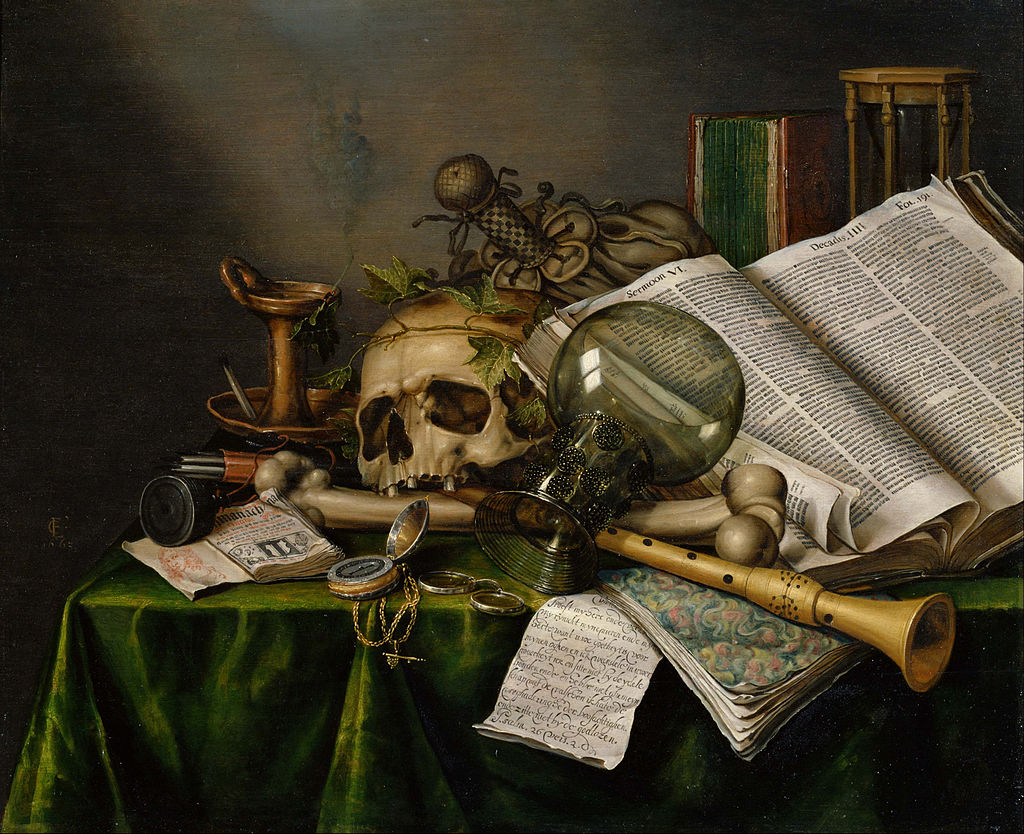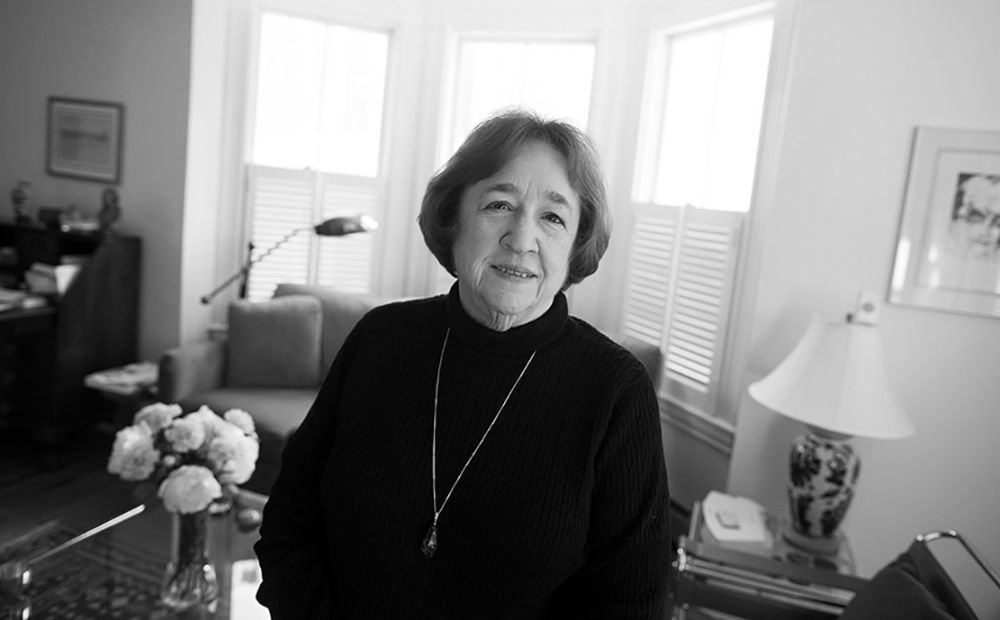Issue 189, Summer 2009
In order to get to Gay Talese’s study you have to leave his Upper East Side town house and go down the elegantly curling stairs, into another entrance, with another set of keys, and down another flight of steps. The bunker, as he calls it, is a long, narrow room that is bigger than many Manhattan apartments, with a bathroom, shower, kitchen, several couches, two desks, a table and chairs. One does not, however, lose the feeling of being underground. One also has the unmistakable sense of being inside his mind.
There are shelves running up to the ceiling filled with boxes and boxes of files. Each box is elaborately festooned with a collage: photographs from newspapers and magazines, excised words, drawings, cartoons. The files contain notes for all of Talese’s books and articles, clippings, outlines, letters. The collages make the cardboard boxes look whimsical, childlike, flamboyant; there is a joy here that most of us can’t muster for file keeping.
Strewn across one of the desks are Ziploc sandwich baggies filled with photographs and meticulously typewritten labels with names and dates. Spilled across the floor are more photographs of his glamorous wife, Nan, and their friends, throughout the five decades of their marriage. Talese is beginning to classify his photographs for his new book, a history of his marriage, and the mess is part of the vast organizational project that marks the beginning of his research. Few writers research as thoroughly or ardently as Talese, who gives nine or ten years of his life to a book. He has records of every day—where he was, who he saw, and how he felt. The photographs will be correlated with those records and placed into files, organized by year. As one can tell by the collages decorating the file boxes, the record keeping is more than just boxes of notes; it’s the creative act itself.
Each time we meet, in the early afternoon after he has come up from the bunker, Talese is always beautifully dressed. He is so beautifully dressed that strangers will talk to him in the street, that waiters and hostesses in restaurants will want to do things for him, like find a special place to put his hat. Talese’s father was a tailor, his mother ran a successful dress shop, and he says his first idea of how to be special was through clothing. His suits are made by a tailor in Paris, whose father trained his father. When Talese tells me that he sometimes goes to the gym in the afternoon I am tempted for a moment to ask what he wears, but I don’t want to blur or complicate the image of him—bespoke suit, vest, pocket square, colored shirt with a white collar, cuff links—that I have in my head.
The care and formality of his appearance carries through into his writing. Talese works at a desk with an enormous computer on it, but the machine looks decades old; it is the computer of someone who views the computer as a more convenient form of typewriter, and even that with reluctance. Talese does not use the Internet. Talese does not have e-mail. In situations where other people would send an e-mail, he will send a typewritten postcard. On the wall above his desk is a white Styrofoam board where he pins up the pages he has written, notes to himself, and ideas in progress.
Now seventy-seven years old, Talese occupies the strange position of being both legendary and misunderstood. His innovation was to apply techniques from the craft of fiction to his newspaper and magazine stories, giving them the shape and life of short stories—a style, later referred to as New Journalism, which he originated in his days as a New York Times reporter in the fifties. He gained attention with his artful magazine pieces for Esquire in the sixties, including “Frank Sinatra Has a Cold,” which the editors later selected as their best piece in seventy years. Since then, he has written many books, including The Kingdom and the Power (1969), about the Times; Honor Thy Father (1971), about the mafia; and Unto the Sons (1992), about his Italian family’s history, all of which have the richness of novels. His method is to go as deeply as possible into character, to burrow into a single psyche, as a way of capturing the spirit of the times. Despite Talese’s success and his vast influence on several generations of nonfiction writers, book reviewers have tended to attack his work with an unusual ferocity. A whiff of scandal still lingers from Thy Neighbor’s Wife (1980), his best-selling study of the sexual revolution in the seventies. Attacked by critics and feminists out of a belief that there was something illicit, or even perverse, in his methods—managing a massage parlor, joining a swingers’ retreat—the book is recognized today as a masterpiece of cultural observation. Talese lives his books in a way most writers don’t; he uproots himself and inhabits the world of his subjects in a way most writers can’t. His books are so thorough, and so passionately researched, that they seem to reproach ordinary journalists for a certain tepidness and restraint in their approach.
Over the course of many afternoons we sat together in his beige living room, on tufted leather couches, and drank glass after glass of Coke. I saw right away how difficult it must have been for his subjects to resist his combination of charm and intensity. The journalist in him appeared eager to take over: he often corrected or steered my questions, which were not always rigorous enough for him. At times it almost seemed that he would have preferred interviewing himself. With company, of course.
INTERVIEWER
How does your writing day begin?
GAY TALESE
Usually I wake up in bed with my wife. I don’t want to have breakfast with anyone. So I go from the third floor, which is our bedroom, to the fourth floor, where I keep my clothes. I get dressed as if I’m going to an office. I wear a tie.
INTERVIEWER
Cuff links?
TALESE
Yes. I dress as if I’m going to an office in midtown or on Wall Street or at a law firm, even though what I am really doing is going downstairs to my bunker. In the bunker there’s a little refrigerator, and I have orange juice and muffins and coffee. Then I change my clothes.
INTERVIEWER
Again?
TALESE
That’s right. I have an ascot and sweaters. I have a scarf.
INTERVIEWER
Do you like that the bunker doesn’t have windows?
TALESE
Yes. There are no doors, no time. It used to be a wine cellar.
INTERVIEWER
How do you write?
TALESE
Longhand at first. Then I use the typewriter.
INTERVIEWER
You never write directly onto the computer?
TALESE
Oh no, I couldn’t do that. I want to be forced to work slowly because I don’t want to get too much on paper. By the end of the morning I might have a page, which I will pin up above my desk. After lunch, around five o’clock, I’ll go back to work for another hour or so.
INTERVIEWER
Surely there must be some days in the middle of a project, when you’re really going, that you write more than a single page.
TALESE
No, there aren’t.




